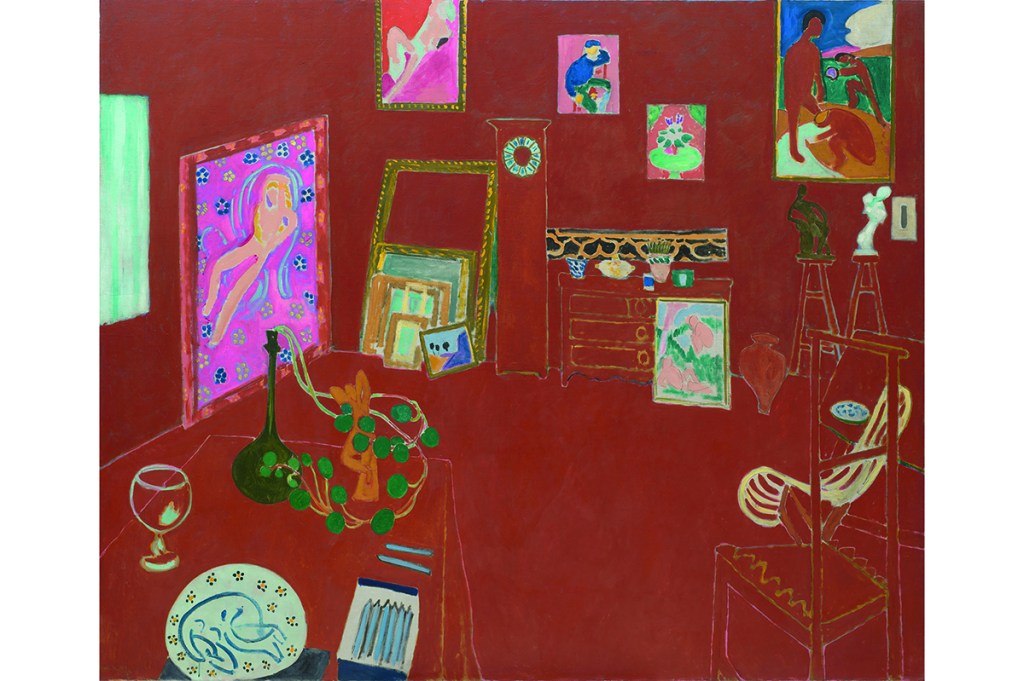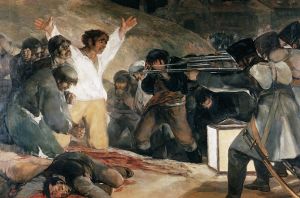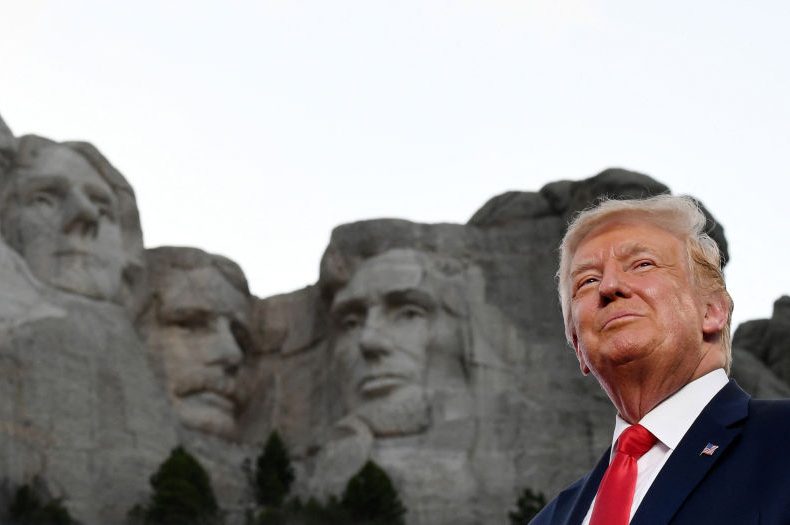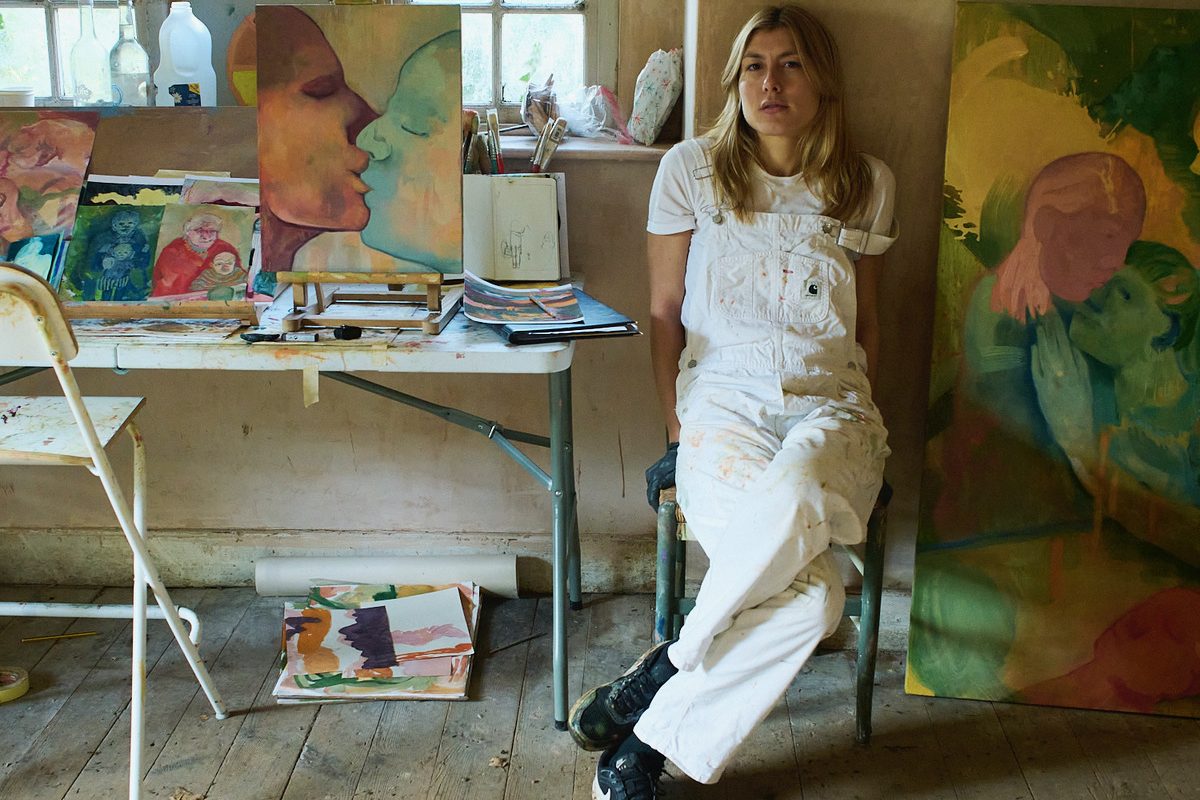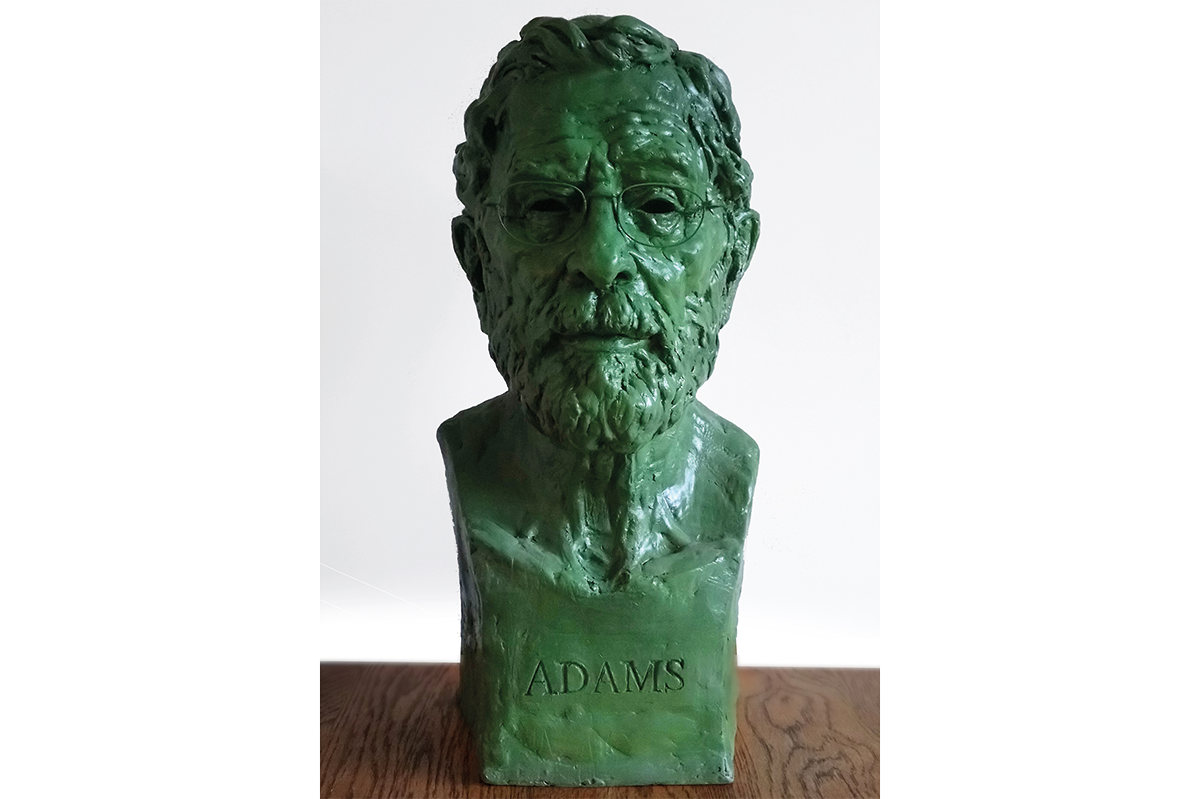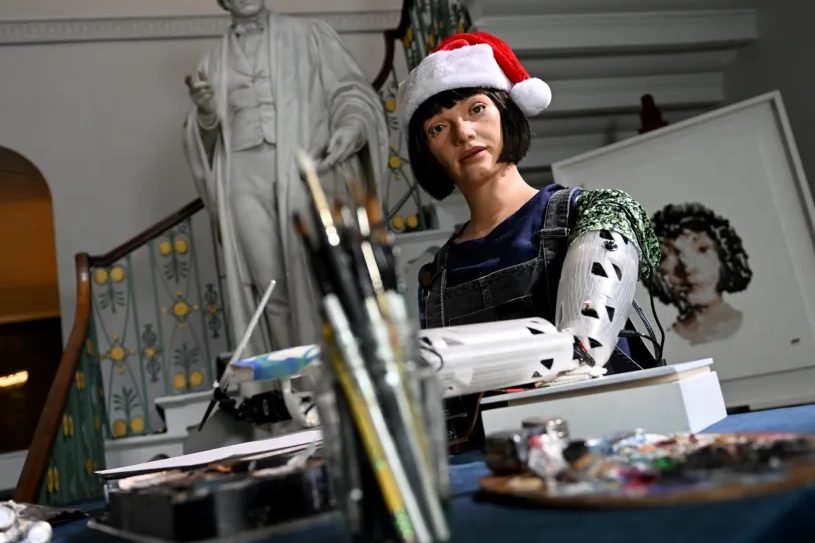Art museums normally organize career surveys or thematic exhibitions, but this spring the Museum of Modern Art has departed from this practice to focus on a single work. Matisse: The Red Studio examines the pivotal painting of the same name that Henri Matisse (1869-1954) created in 1911. Exhibitions are normally years in the making, so while this one was in the works long before the Covid-induced lockdown, it offers a model for institutions struggling in the wake of the pandemic. Rather than expending scarce resources on an expensive blockbuster loan show, do a deep dive into something in your own collection.
And what a dive this is. An exemplary exhibition, with a catalog to match, it was organized by Ann Temkin, MoMA’s chief curator of painting and sculpture, and Dorthe Aagesen, chief curator and senior researcher at the National Gallery of Denmark, where it travels later this year. Among its many revelations is the fact that, for much of its early life, the painting we recognize as a canonical masterpiece of modernism was something of a cultural orphan.
It was rejected as too rich for the blood by the patron who commissioned it, the Russian businessman Sergei Shchukin, one of Matisse’s earliest and most courageous supporters. On the rare occasions it was exhibited, it was usually denounced as an artistic abomination and rejected by potential buyers, finally winding up on the wall of a swanky London nightclub in the 1920s. This is a little like finding out that one of Shakespeare’s plays premiered in a bordello. It was eventually acquired by MoMA in 1949, after which the painting’s importance became more and more clear, as artists rising in postwar New York began reflecting its influence. The painting shows the interior of Matisse’s own studio just outside Paris. A number of the artist’s paintings are arrayed around the walls and in the foreground. Nothing unusual there, you might say; just one more link in the long historical chain of such professional self-representations in art. But there is something radically different going on here. Everything other than those works of art — the walls, the floor, even most of the furniture — is painted in a deep Venetian red.
“The Red Studio” was Matisse’s most radical picture to date, the latest and boldest step yet in his effort to formulate a new kind of painting. It was one which kept faith with the world of visual appearances, as artists had for centuries, yet simultaneously broke free from what he and other artists felt was the stifling inheritance of academic realism. In its place, he wanted to give free rein to the possibilities of “pure painting” — primarily color and his own emotions.
Thus, the allover red here plays three roles: it emphasizes the painting’s surface; it opens up a deep, aerated space; and it tells us something about the intense feelings engendered by his studio. Cut off from the outside world — a curtain covers the lone window — and with a handless grandfather clock in the background, the space depicted is the timeless hothouse world of, as one writer has termed it, “imagination’s chamber.” Yet Matisse has departed from tradition in another way. Whereas such pictures normally depict the studio as a space of ever-in-progress art-making, the displayed paintings and empty chairs here tell us Matisse sees it as a different sort of environment, one where completed work can be looked at and reflected upon.
Matisse: The Red Studio is divided into two main sections, with a small, coda-like room at the end focusing on the painting’s recent conservation. One gallery is devoted to the painting itself. It occupies center stage, surrounded by the surviving six paintings, one ceramic and three sculptures it depicts. In what amounts to a mini-exhibition of its own, we also see five preparatory sketches for the largest painting-within-the-painting, the “Large Nude” (1911) over at the left. It’s a fascinating array in which we see Matisse’s mind at work, as he redoes a Michelangelesque nude — she’s a dead ringer for the figure of “Day” in the Medici Chapel in Florence — as a semi-abstract Matissean female. But Matisse was never satisfied by the painting, and he ordered that it be destroyed after his death.
The studio in question was new, designed and purpose-built by Matisse, and the first such workspace he’d ever had — at the age of forty-one. Thanks to the inclusion of “Studio Under the Eaves” (1903), one of a number of important loans from overseas museums, it is possible to see what a transformative effect this change in his professional circumstances had on Matisse’s art, both literally and figuratively taking it from darkness to light.
The former painting depicts a gloomy and cramped interior, where the only light is to be found outside, through the window. The painting’s small size reinforces a sense of physical and emotional constriction. By contrast, “The Red Studio” is in every way expansive. Placed as they are around its perimeter, the auxiliary artworks evoke the large size (just over a thousand square feet) of Matisse’s new working space. The “Red Studio” itself fairly pulses with light — the light of color — and the painting is several times larger than “Studio Under the Eaves.”
The feeling of emotional expansiveness is also painterly. Several of the paintings marshalled for this show, such as “Young Sailor II” (1906) and “Nude with White Scarf” (1909), have red in them. But in “The Red Studio,” the color is used in such abundance, and to such different ends, that comparing it with the depicted works makes you understand that in them red functions traditionally as a medium of representation, whereas in “The Red Studio” the color has become a protagonist, the lead character in a pictorial drama. For this reason and others, it’s hard to think of any recent art installation that has so deepened one’s understanding of a single work of art.
The exhibition’s second gallery transports you into an altogether different world, one that reminds us of Matisse’s two-front struggle: reinventing modern painting on the one hand and engaging an uncomprehending and often hostile public on the other. The gallery subdivides according to the different episodes in the work’s post-studio life. These include Shchukin’s engagement and retreat; the painting’s inclusion in two groundbreaking (and shocking) modern art exhibitions, Roger Fry’s 1910-11 “Second Post-Impressionist Exhibition” in London and the 1913 Armory Show in New York; and photos of it in London’s Gargoyle Club. One can only shake one’s head in wonder at these shots. It’s a miracle the painting wasn’t damaged.
In the catalog’s deeply researched and comprehensive examination of this painting, one detail receives scant attention. Not all the furniture is painted red. One chair stands out from the red background because it is rendered in a kind of creamy white. No explanation is offered, but I find it significant that it appears to be facing the “Large Nude.” Considering that “The Red Studio” is an image of the artist’s workspace as an environment in which to reflect on and take stock of what has been done, it’s tempting to read the chair as a surrogate for the artist as he sits and considers the picture that gave him so much trouble.
The risk with an exhibition like this is that it will live more on the page than in the gallery, with the auxiliary artworks and archival materials functioning as little more than props or illustrations for the catalog’s research. No such problem here. Intriguing as it is to see the depicted paintings and other studio denizens, we keep getting pulled back to the focus painting itself, there to ponder by what strange alchemy Matisse, in “The Red Studio,” created something so much greater than the sum of its parts.
Eric Gibson is the Wall Street Journal’s Arts in Review editor and the author of The Necessity of Sculpture: Selected Essays and Criticism, 1985-2019 (Criterion). This article was originally published in The Spectator’s July 2022 World edition.



